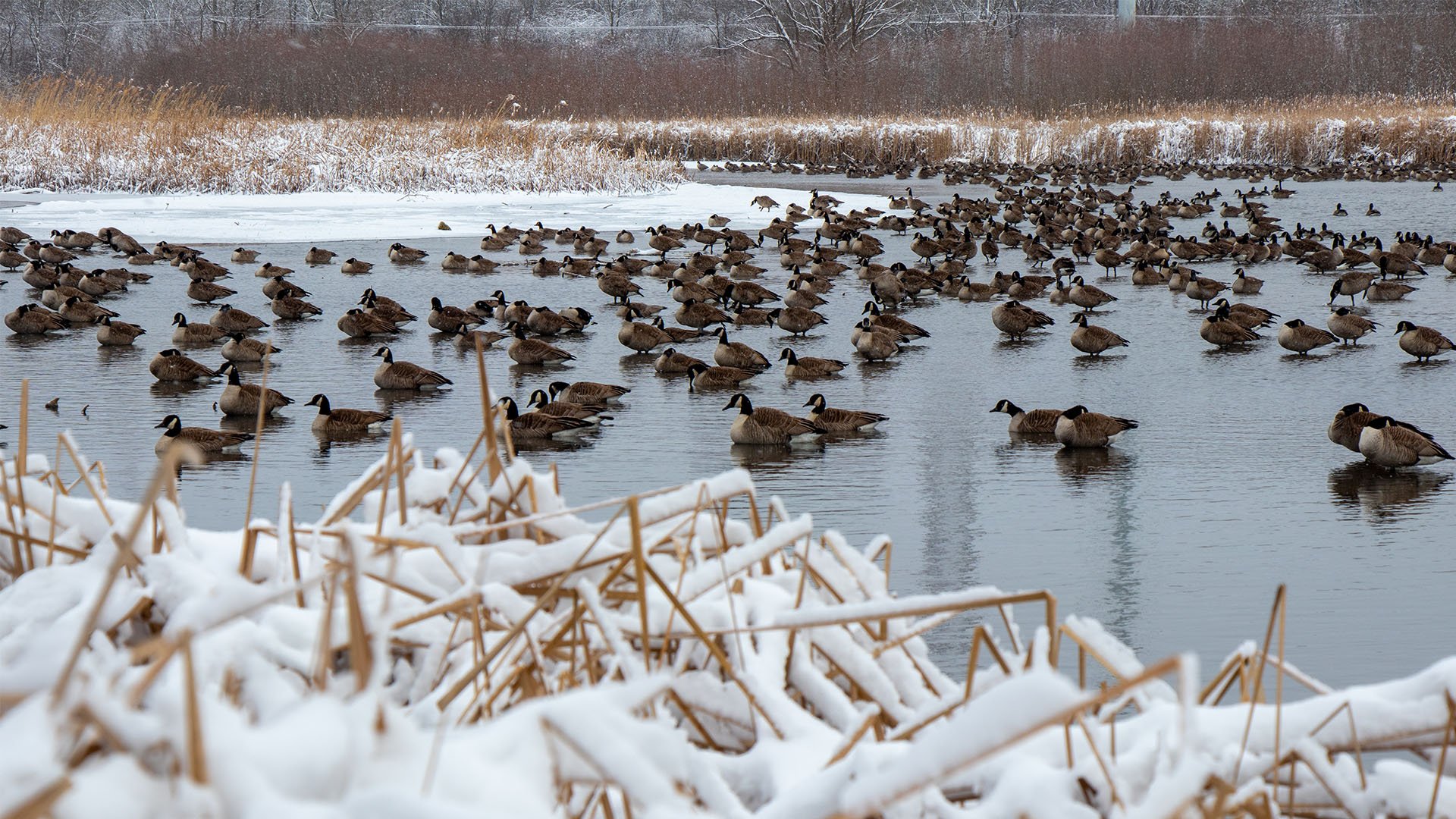
Highly Pathogenic Avian Influenza
Highly pathogenic avian influenza — also known as HPAI,H5N1, or bird flu — is again spreading across the United States and has been positively identified in multiple bird species in Illinois.
At this time, the Forest Preserve District's DuPage Wildlife Conservation Center is not accepting waterfowl or other aquatic birds for any treatment.
As with the last outbreak, the center is working to limit the spread of HPAI and is using a tiered approach based on current conditions. Our highest priority is the safety of our staff, volunteers, patients, and resident animals.
Recommendations
- Do not feed wild waterfowl or other aquatic birds. Feeding causes birds to congregate, which can speed the spread of disease, and increases birds' contact with humans. Spread to humans is unlikely but still possible.
- Songbirds are considered low-risk, so there are not any recommendations at this time to remove feeders, although routinely cleaning and disinfecting feeders is always strongly recommended.
- The Illinois Department of Natural Resources is monitoring the progression of HPAI. If you find five or more dead or dying birds in one location within a 24-hour period, contact the IDNR wildlife biologist for DuPage County directly.
- If you need to dispose of dead birds, refer to the DuPage County Health Department's avian flu webpage, which includes safe disposal procedures.
- If you have pet birds or backyard poultry, keep them in a building until the risk decreases. If this is not possible (especially for poultry), house them in enclosures with fine mesh and a full roof to limit the spread of disease from wild birds.
- Be patient with wildlife rehabilitators. It’s a busy time of year and they are working under stricter biosecurity measures. Please respect that they may need to change their species or capacity limits to provide safe care to their patients and keep staff and volunteers safe.
FAQs About Avian Flu
Avian influenza, or bird flu, is a virus that primarily affects poultry and wild birds. It comes in two different forms: low pathogenicity avian influenza and highly pathogenic avian influenza.
LPAI circulates naturally and is routinely found in wild waterfowl and shorebird populations such as geese, ducks, and gulls, which generally do not show any significant signs of disease. LPAI rarely cause issues in poultry.
HPAI is similar to the human influenza virus (aka the flu). It changes every year, requiring a different vaccine. HPAI (usually H5N1, H5N2 or H5N8) is more infectious and can infect domestic poultry, resulting in high sickness and death rates. In this current outbreak, cattle, cats, and other mammals seem to be particularly susceptible.
Unfortunately, native wild birds can also harbor HPAI, showing no to minimal signs to severe signs of disease. They can spread HPAI to commercial poultry over large geographic regions via migratory flyways.
In humans, clinical signs can include mild flu-like symptoms (fever, upper respiratory signs) to severe respiratory disease or pneumonia. Infection in humans is unlikely with the H5N1 variant, but there has been a recent severe case in Louisiana. Individuals with close and prolonged exposure to infected birds are at much higher risk, including those who work in wildlife rehabilitation centers or farms.
Clinical signs in wild birds include neurological deficits (seizures, tremors, ataxia, mentation changes), respiratory disease (nasal discharge, coughing), and gastrointestinal disease (diarrhea) but are often less specific (lethargy, decreased appetite).
Sudden death, especially of multiple birds, can occur. Species like waterfowl (geese, ducks) and shorebirds (including gulls) may show no initial signs, though. Raptors with HPAI often do show signs and progress rapidly within a few days. HPAI has been found in some songbirds, but they are considered a low-risk species.
Avian influenza is shed in large concentrations in feces but is also spread via saliva and other bodily secretions. Direct bird-to-bird spread presents the highest risk, but the virus can also spread via hands, clothing, shoes, equipment, etc.
HPAI can live weeks to months at cooler temperatures (even longer in water and below freezing) but rarely more than a few days at room temperature or warmer. It is generally easy to remove with a disinfection agent.
HPAI poses an extreme risk to the U.S. and international animal production trade. Mass outbreaks have cost billions of dollars and millions of lives in poultry and cattle species.
In the 2014-15 outbreak — considered the most significant animal health event in U.S. history — around 50 million birds died or were euthanized.